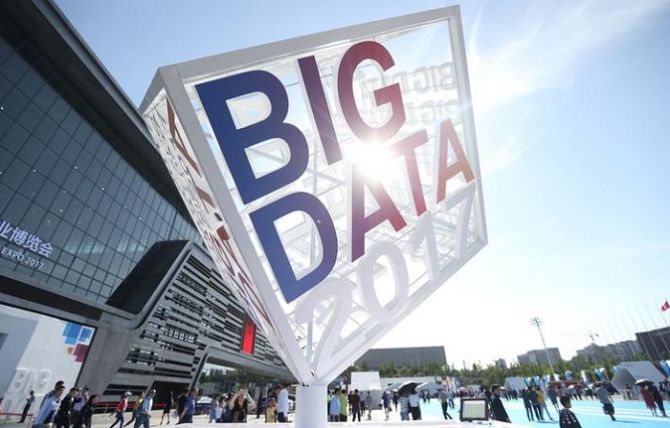Consumers leave digital footprints across devices, social media platforms and mobile apps. With Machine Learning, marketers can harness insights from large volumes of data to segment and differentiate customers to create personalised campaigns, says Manish Choudhary.

Photograph: Reuters
Today, marketers have access to a vast amount of data that they can use to better understand customers. Customers are no longer passive consumers of information but rather seek a personalised and human experience every time they interact with a brand. This digital transformation has created opportunities for new consumer conversations between the physical and digital and allowed marketers to track and understand every part of the consumer purchase cycle that was not previously possible.
Harnessing insights from data using machine learning (ML) can help marketers get deeper insights about who their customers are, where they go, what they do, their interests, what kind of ads should be targeted to them to create contextual and customised campaigns.
For example, a streaming video company asks users to share information about their programming needs during the time of signing up. They then use ML algorithms to generate a list of recommended programs that the consumer is likely to watch based on the information shared and content viewed by the consumer, creating a personalised experience for the consumer.
Consumers leave digital footprints across devices, social media platforms and mobile apps. Using ML algorithms, marketers can harness insights from large volumes of data to segment and differentiate customers to create personalised campaigns.
For instance, e-commerce websites use social data, past purchase data, web activity, browsing history, and areas of interest to give customers a targeted list of products they are likely to purchase, while 'remembering' the customers previous visit and activity.
One of the hardest tasks for a marketer can be attributing actions from the physical world to steps taken in the digital world.
Location-intelligent marketing helps answer questions such as how many website visitors actually converted to a store visit? Which marketing campaign brought the most walk-ins?
Location intelligence adds a new dimension to consumer data. Where people are going and what they're doing in the real world conveys a lot about their interests and what they're willing to buy.
Through location intelligence, advertisers have a better grip on demographic and geographic aspects of customers, which can, in turn, help advertisers in pitching to customers or identifying new sales prospects, while taking a localised approach.
Smart geo fencing applications activate ads and offers based on the customer's proximity to a certain store or specific points of interests. For example, a food chain in a mall can send targeted offers to customers on a 'real-time' basis to increase sales.
Data makes it easy for marketers to reach potential customers.
By using ML algorithms, marketers can create specific audience clusters based on the kind of people they want to reach.
By using an existing data set of customers, machine learning algorithms can create a 'look-alike' list of prospective customers based on similarity of profiles. Facebook effectively uses look-alike customer targeting to target ads to potential consumers.
E-commerce brands can use their available CRM data to build look-alike audiences in order to acquire new customers that share similar attributes to their existing customers, resulting in increased sales.
Customers today know what they want and it's up to brands and marketers to make the consumer purchase journey interesting and memorable. Organisations that continue to innovate are the ones likely to thrive in the physical and digital world of commerce.
Manish Choudhary is senior vice-president, global innovation and MD, India operations, Pitney Bowes Inc.
Recommended for you: Can Nykaa give Amazon & Flipkart lessons on harnessing Big Data?











